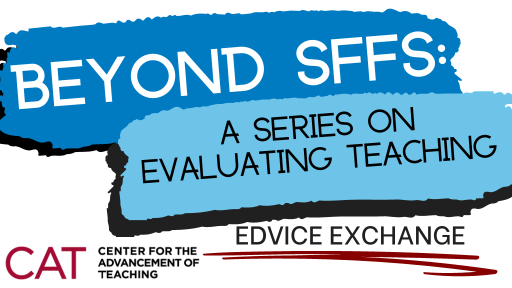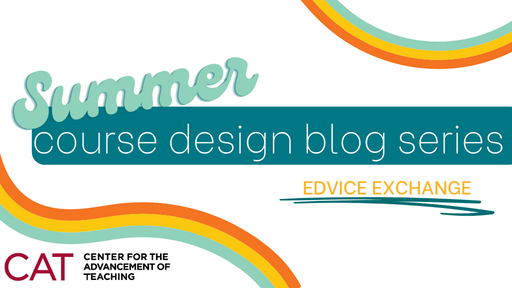Stephanie Laggini Fiore, Ph.D.

While reflection on one’s teaching, as well as student and colleagues’ feedback, are better-known methods for evaluating teaching, perhaps the most overlooked method is to consider how we use the scholarly literature on teaching and learning to improve our teaching. Instructors who engage with the literature of the scholarship of teaching and learning develop a vocabulary and way of thinking that moves them beyond replication of teaching methods they experienced as a student or ones that were taught to them when they were teaching assistants or junior faculty. Familiarity with this literature allows us to engage in reflection and experimentation that continually evolves our teaching practices. The insights gained from engaging with the extensive body of work on teaching and learning includes both validating effective practices you may already have been using, and of course, opening up new ways of teaching, designing curriculum, assessing learning, and supporting students that we may have never considered. It also clarifies for us why certain methods may work better than others.
It is clear to me why this criterion is often overlooked. When I started working at our teaching center after having taught for over 25 years, I was introduced for the first time to the scholarly literature on teaching and learning. I had dabbled a bit with very specific literature on teaching English as a second language, and I had read a little bit about oral proficiency methods for teaching world languages, but I never moved beyond these limited forays into this kind of scholarship. I don’t think my lack of awareness was unusual. Immersed in my disciplinary research, as most faculty are, I had never had occasion to explore the wealth of scholarship that provides guidance and evidence on how students learn. In my new role at the center, a whole world opened up to me that I never knew existed.
I remember in particular a brand new book that had come out just as I started my role at the center—How Learning Works: 7 Research-Based Principles for Smart Teaching. It was an incredibly good entry point as each chapter pulled together the research on teaching and learning on a variety of topics in coherent form and then suggested strategies we can employ in the classroom. The chapter on student motivation was transformational for me. It validated much of what I had been doing, especially around creating a positive environment for learning, but also provided so many ideas for how to support student learning in more effective ways. When I went back into the classroom, my newfound knowledge really helped me rethink my teaching and implement concrete changes that saw exciting results. If I had been asked to demonstrate how I utilized the literature on teaching and learning to improve student learning as part of a process for evaluating teaching, I could have pointed clearly to the changes I made as a result of this book and the impact those changes had on student engagement and motivation.
So how can you use this lens to evaluate teaching? In particular, you can demonstrate how you have engaged in a process of continual scholarly teaching by taking advantage of professional development opportunities that allow you to delve into the literature on teaching and learning. For instance, have you attended workshops at the CAT, met with an educational development or educational technology consultant at the CAT, or attended other similar programming offered by professional organizations in your discipline? Have you taken a deeper dive by enrolling in longer-term, intensive opportunities focused on particular aspects of teaching and learning? For instance, perhaps you have attended our 12-hour Teaching for Equity series, or you have met monthly with a cross-disciplinary group to explore a teaching topic in a faculty learning community. Maybe you have simply gotten your hands on some excellent literature (the CAT has a lending library available on all kinds of topics!) and have made changes to your teaching based on what you have read. And, of course, taking this a step further, you might contribute to the scholarship on teaching and learning by investigating how teaching or curricular changes you have implemented have impacted student learning, and then presenting or publishing on those findings.
If you have never before considered this particular lens, I urge you to give it a try! Faculty who begin that journey into the scholarship on teaching and learning find it a fascinating and energizing way to evolve their teaching and curricular practices.
Stephanie Fiore is Assistant Vice Provost and Senior Director of Temple’s Center for the Advancement of Teaching.




